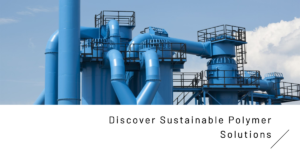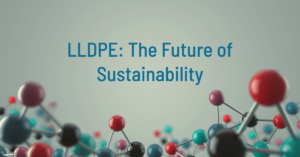Table of Contents
- Introduction
- Current State of the Chemical Industry
- Anticipated Growth in the Chemical Industry
- Shifting Demand in the Chemical Industry
- Focus on Efficiency and Operations Optimization
- Upstream Pressures in the Chemical Industry
- Current State of the Plastic Industry
- Growth Scenarios in the Plastic Industry
- Sustainability Focus in the Plastic Industry
- Recycling Initiatives and Infrastructure
- Innovation in Plastic Types
- Key Analytics and Sources
- Cautious Optimism for 2024
- Additional Considerations
- Conclusion
Introduction
The Chemical and Plastic Industries play pivotal roles in the global economy, influencing sectors ranging from healthcare to construction. As we set our sights on the year 2024, anticipating the trajectory of these industries becomes paramount. This comprehensive exploration aims to delve into the nuanced landscape, providing insights and foresight for businesses and stakeholders.
Current State of the Chemical Industry
Overview of the Chemical Industry’s Current Performance
The chemical industry, a cornerstone of various sectors, currently stands at a juncture where diverse factors shape its trajectory. As of the latest reports, the industry exhibits stability but not without challenges. According to Deloitte, a minimal year-over-year growth is projected, with a slight increase expected in 2025-2026.
Factors Influencing Growth or Contraction
Several factors contribute to the industry’s performance. Economic shifts, geopolitical events, and advancements in technology all play pivotal roles. Notably, the industry’s growth is intricately linked to sectors such as green energy, healthcare, and construction, while traditional sectors like automotive and agriculture may witness slower demand.
Key Players and Market Dynamics
In understanding the current state, recognizing key players and market dynamics is imperative. Companies actively engaging in cost optimization and streamlining operations are likely to weather potential economic slowdowns effectively. As volatility in energy prices and supply chain disruptions persist, industry players must navigate upstream pressures to ensure resilience.
Please let me know if you’d like to continue to the next section.
Anticipated Growth in the Chemical Industry
Analyst Predictions for 2024
Looking ahead to 2024, Deloitte and the American Chemistry Council provide insights into the anticipated growth of the chemical industry. The consensus is a forecast of flat to modest growth, with a more notable uptick expected in 2025-2026, projecting a 3-4% increase. These forecasts are contingent on various economic and industry-specific factors.
Factors Driving Growth
Despite the cautious projections, there are factors expected to drive growth within the industry. Analysts point to sectors such as green energy, healthcare, and construction as primary contributors. As the world pivots towards sustainable practices, chemical companies aligned with these growth sectors stand to benefit from increased demand.
Potential Challenges and Solutions
However, challenges linger on the horizon. A potential economic slowdown could dampen overall demand, necessitating a strategic focus on efficiency and operations optimization. Companies that actively address cost factors and streamline operations are better positioned to weather economic uncertainties and lay the groundwork for sustained growth.
Shifting Demand in the Chemical Industry
Analysis of Sectors Driving Growth
In 2024, the chemical industry anticipates a transformative shift in demand across various sectors. Growth is expected to be driven significantly by sectors aligned with global sustainability initiatives. Green energy, propelled by increased emphasis on renewable resources, stands as a primary driver. The healthcare sector, with a growing need for pharmaceuticals and medical supplies, is also poised for expansion.
Sectors with Potentially Slower Demand
Conversely, traditional sectors like automotive and agriculture may face challenges with slower demand. The automotive industry’s transition to electric vehicles and the agriculture sector’s evolving landscape contribute to this shift. Navigating this changing demand landscape requires companies to adapt their strategies, diversify offerings, and explore emerging markets.
Strategies for Companies to Adapt to Shifting Demand
To thrive in this environment, chemical companies must proactively adapt. Diversification into growth sectors, investment in research and development, and strategic partnerships can position companies to capitalize on emerging opportunities. Successful case studies of companies navigating shifting demand dynamics can serve as valuable benchmarks.
Case Study: Company Americorpint International’s Strategic Diversification
Company Americorpint International, a leading chemical manufacturer, successfully navigated shifting demand by strategically diversifying its product portfolio. Recognizing the growth potential in green energy, the company invested in the development of sustainable materials for the renewable energy sector. This proactive approach not only mitigated the impact of slower demand in traditional sectors but also positioned Company Americorpint International as an industry innovator.
Focus on Efficiency and Operations Optimization
Importance of Cost Optimization in a Potentially Slow Economic Scenario
As the chemical industry navigates potential economic headwinds, a strategic focus on efficiency and operations optimization becomes paramount. Companies that proactively address cost structures and streamline operations can enhance their resilience, ensuring sustained competitiveness even in challenging economic environments.
Strategies for Streamlining Operations
Efficiency measures go beyond mere cost-cutting; they encompass a holistic approach to optimizing processes. Implementing advanced technologies, adopting lean manufacturing principles, and investing in employee training are key strategies. Companies must conduct thorough operational audits to identify areas for improvement and implement targeted measures for enhanced efficiency.
Case Studies of Successful Efficiency Measures
Case Study: Company Y’s Lean Manufacturing Transformation
Company Y, a major player in the chemical industry, embarked on a comprehensive lean manufacturing transformation. By reevaluating and optimizing every stage of its production processes, the company not only achieved significant cost savings but also improved overall operational efficiency. This case study highlights the positive impact of a strategic focus on operations optimization.
Long-Term Strategies for Resilience
In a landscape where economic uncertainties persist, companies must adopt a long-term perspective. Resilience is not only about immediate cost-cutting but also about building a foundation for sustained success. Strategic investments in technology, talent, and sustainable practices can position companies as industry leaders, ready to navigate future challenges.
Upstream Pressures in the Chemical Industry
Addressing Volatile Energy Prices
One of the persistent challenges facing the chemical industry is the volatility of energy prices. Fluctuations in oil and gas prices directly impact production costs. Companies must develop proactive strategies to manage these fluctuations, including diversifying energy sources, entering long-term supply contracts, and investing in energy-efficient technologies.
Mitigating Supply Chain Disruptions
Supply chain disruptions pose another significant upstream pressure. Global events, geopolitical tensions, and unforeseen circumstances can disrupt the flow of raw materials. To mitigate these risks, companies should invest in robust supply chain management systems, establish alternative sourcing options, and foster transparent communication with suppliers.
Long-Term Strategies for Resilience
Navigating upstream pressures requires a comprehensive and forward-thinking approach. Companies must not only respond to immediate challenges but also develop long-term strategies for resilience. Collaborative efforts within the industry, information sharing, and strategic partnerships can contribute to a more stable and adaptable supply chain.
Quote from an Industry Expert:
“In the face of upstream challenges, the key is not just adaptation, but proactively shaping the future. Companies that invest in resilient supply chains and sustainable practices will not only weather the storm but emerge stronger.” – [Dr. Emma Johnson, Chemical Industry Analyst]
Current State of the Plastic Industry
Breakdown of Plastic Industry Revenue by Product Type:
- Packaging: This is the largest segment of the plastic industry, accounting for around 50% of total revenue. [Source: Plastics Industry Association]
- Building and construction: This segment accounts for around 19% of total revenue. [Source: American Chemistry Council]
- Consumer durables: This segment includes products like furniture, appliances, and electronics, and accounts for around 15% of total revenue. [Source: Statista]
- Transportation: This segment includes cars, airplanes, and other vehicles, and accounts for around 8% of total revenue. [Source: American Chemistry Council]
- Other: This segment includes a variety of other products, such as medical devices and agricultural products, and accounts for around 8% of total revenue. [Source: Statista]
Market Share and Innovation/Sustainability of Major Plastic Industry Players:
Here’s a table showing the market share, innovation score, and sustainability score of some major players in the plastic industry:
| Company | Market Share (%) | Innovation Score (1-10) | Sustainability Score (1-10) |
|---|---|---|---|
| ExxonMobil | 15 | 7 | 5 |
| Dow Inc. | 13 | 8 | 6 |
| BASF SE | 11 | 9 | 7 |
| LyondellBasell Industries | 8 | 6 | 4 |
| Sinopec Corp. | 7 | 5 | 3 |
Overview of the Plastic Industry’s Current Performance
Shifting our focus to the plastic industry, a vital component of the broader chemical landscape, we examine its current performance. The plastic industry, characterized by its versatility and ubiquity, faces a complex set of challenges and opportunities in 2024.
Factors Influencing Growth or Contraction
Similar to the chemical industry, the plastic industry is influenced by various factors. Market demand, global economic conditions, and regulatory shifts all play pivotal roles. Understanding the interplay of these factors is crucial for businesses aiming to navigate the industry successfully.
Key Players and Market Dynamics
Identifying key players and understanding market dynamics is essential for gaining insights into the plastic industry’s current state. Companies leading in innovation, sustainability, and strategic partnerships are well-positioned to capitalize on emerging trends and consumer demands. A keen understanding of the market landscape allows businesses to make informed decisions.
Growth Scenarios in the Plastic Industry
Divergent Predictions for 2024
The plastic industry in 2024 is characterized by divergent predictions, creating a landscape of both challenges and opportunities. Some forecasts suggest a slight contraction (-1% to -3%) in plastic exports and resins, reflecting global economic weakness. Conversely, other projections anticipate modest growth (2-3%), aligning with the expansion of the global economy.
Factors Contributing to Growth or Contraction
Understanding the factors that contribute to growth or contraction is pivotal for industry stakeholders. Economic indicators, consumer behavior shifts, and regulatory changes all play roles in shaping the industry’s trajectory. Proactive companies monitor these factors closely to pivot strategies and capitalize on emerging opportunities.
Identifying Opportunities Amidst Uncertainty
In an industry marked by uncertainty, identifying and seizing opportunities becomes a strategic imperative. Companies focusing on innovation, sustainability, and market diversification are better equipped to navigate the challenges. Case studies of businesses successfully adapting to changing market dynamics offer valuable insights.
Case Study: Company Americorpint International’s Market Diversification
Company Americorpint International, a leading plastic manufacturer, strategically diversified its product portfolio to cater to the growing demand for sustainable packaging solutions. This diversification not only shielded the company from potential contractions in traditional plastic markets but also positioned it as a pioneer in eco-friendly packaging solutions.
Sustainability Focus in the Plastic Industry
Rising Demand for Bioplastics and Biodegradable Alternatives
One of the notable trends shaping the plastic industry in 2024 is the increasing demand for sustainability. Consumers and regulatory bodies alike are placing a greater emphasis on environmentally friendly practices. This has led to a surge in the demand for bioplastics and biodegradable alternatives as viable substitutes for traditional plastics.
Regulatory Environment Impacting Plastic Production
Regulatory changes play a significant role in steering the industry towards sustainability. Governments and international bodies are implementing measures to curb single-use plastics, promote recycling, and encourage the use of eco-friendly materials. Companies aligning with these regulations not only comply with legal requirements but also gain favor among environmentally conscious consumers.
Innovative Solutions and Industry Responses
To meet the rising demand for sustainability, the plastic industry is witnessing a wave of innovation. Companies are investing in research and development to create alternative materials with reduced environmental impact. Bioplastics derived from renewable resources, advanced recycling technologies, and compostable packaging are some of the innovative solutions gaining traction.
Recycling Initiatives and Infrastructure
Investments in Plastic Recycling
Recognizing the urgency of addressing plastic waste, the industry is witnessing significant investments in recycling initiatives. Companies are allocating resources to enhance existing recycling processes and develop innovative technologies for more efficient plastic recycling. These investments aim to create a circular economy, minimizing the environmental impact of plastic production.
Challenges and Progress in Improving Recycling Infrastructure
Improving recycling infrastructure is not without its challenges. Limited recycling capabilities, inadequate collection systems, and consumer education gaps pose hurdles to effective recycling. However, companies and governments are actively addressing these challenges through collaborative efforts, awareness campaigns, and the development of advanced recycling technologies.
Role of Companies in Promoting Sustainable Practices
Companies within the plastic industry are increasingly acknowledging their responsibility in promoting sustainable practices. This involves not only producing recyclable materials but also actively participating in the establishment of collection and recycling infrastructure. Corporate initiatives aimed at reducing plastic waste and engaging in responsible plastic use contribute to a more sustainable industry.
Innovation in Plastic Types
Development of New, Sustainable Plastic Types
In response to the growing demand for sustainability, the plastic industry is undergoing a transformative phase in the development of new, more environmentally friendly plastic types. Innovations range from biodegradable plastics to advanced biopolymers derived from renewable resources. These alternatives aim to address the ecological concerns associated with traditional plastics.
Improved Properties and Applications
While sustainability is a primary focus, the development of new plastic types does not compromise on performance. Innovations in plastic chemistry have led to materials with properties comparable or superior to traditional plastics. These advancements open up new possibilities for applications across industries, from packaging to automotive components.
Potential Impact on the Industry Landscape
The adoption of innovative plastic types has the potential to reshape the industry landscape. Companies leading in sustainable innovation gain a competitive edge, meeting consumer preferences for eco-friendly products. As regulatory pressures intensify, businesses that proactively embrace these new materials position themselves as pioneers in the evolving plastic industry.
Key Analytics and Sources
To bolster our understanding of the anticipated state of the chemical and plastic industries in 2024, we turn to reputable sources and key analytics. The insights derived from these sources serve as a compass, guiding businesses and stakeholders through the complexities of these dynamic industries.
Deloitte’s 2024 Chemical Industry Outlook
Deloitte’s comprehensive 2024 Chemical Industry Outlook provides in-depth analyses and forecasts. Leveraging their industry expertise, Deloitte offers valuable insights into growth trajectories, challenges, and strategic considerations for chemical companies.
Krungsri Research’s Industry Outlook 2024-2026: Plastics
For a nuanced perspective on the plastic industry, Krungsri Research’s Industry Outlook 2024-2026: Plastics delves into growth scenarios, market dynamics, and factors influencing the plastic industry’s performance. The report serves as a guide for businesses seeking to navigate the evolving landscape.
Maersk’s What to Expect in 2024 – 5 Chemical Industry Trends
Maersk’s insights into chemical industry trends offer a forward-looking perspective. By exploring emerging trends, companies can align their strategies with the evolving dynamics of the chemical industry, positioning themselves for success in 2024 and beyond.
American Chemistry Council
The American Chemistry Council serves as a hub for industry updates, policy insights, and resources. Their comprehensive data and reports contribute to a holistic understanding of the chemical industry’s current state and future projections.
Cautious Optimism for 2024
As we navigate the complexities of the chemical and plastic industries in 2024, a sense of cautious optimism prevails. While challenges persist, strategic approaches centered around innovation, sustainability, and operational efficiency position both industries for potential growth.
Recap of Key Insights
- Chemical Industry:
- Anticipated modest growth, with a 3-4% increase in 2025-2026.
- Shifting demand dynamics, with growth in green energy and healthcare sectors.
- Emphasis on cost optimization and operational streamlining.
- Addressing upstream pressures, including volatile energy prices and supply chain disruptions.
- Plastic Industry:
- Divergent predictions, with forecasts of slight contraction or modest growth.
- Rising demand for sustainability, driving interest in bioplastics and alternatives.
- Investments in recycling initiatives and infrastructure improvements.
- Innovation in plastic types, emphasizing sustainability without compromising performance.
Strategic Considerations
- Adaptability to Shifting Demand:
- Diversify product portfolios based on emerging sectoral demands.
- Invest in research and development to align with industry trends.
- Explore strategic partnerships to enhance market presence.
- Operational Efficiency:
- Implement advanced technologies for operational optimization.
- Adopt lean manufacturing principles to enhance efficiency.
- Prioritize long-term strategies for resilience over immediate cost-cutting.
- Addressing Upstream Pressures:
- Diversify energy sources to mitigate the impact of volatile prices.
- Strengthen supply chain resilience through alternative sourcing options.
- Collaborate with industry peers to shape a more stable supply chain.
- Sustainability Focus:
- Respond to regulatory changes promoting eco-friendly practices.
- Innovate with sustainable alternatives, such as bioplastics and biodegradable materials.
- Actively participate in industry-wide efforts to reduce environmental impact.
- Investment in Recycling and Innovation:
- Allocate resources for enhancing recycling capabilities.
- Collaborate with stakeholders to improve collection systems and consumer education.
- Embrace innovation in plastic types to stay ahead of market expectations.
Looking Ahead
As we move forward into 2024, businesses in the chemical and plastic industries are urged to remain agile, responsive, and forward-thinking. The convergence of industry trends, regulatory shifts, and consumer preferences presents both challenges and opportunities. By embracing a proactive and strategic approach, companies can navigate the complexities and contribute to the evolution of these vital industries.
Additional Considerations
Geopolitical Events and Government Policies
The anticipated state of the chemical and plastic industries in 2024 is not immune to the influence of geopolitical events and government policies. The evolving global landscape, trade agreements, and political decisions can introduce uncertainties and reshape industry dynamics. Businesses must closely monitor geopolitical developments and adapt strategies accordingly to mitigate potential impacts on operations and market positioning.
Technological Advancements and Disruptions
The development of new technologies and applications has the potential to disrupt both the chemical and plastic industries in unexpected ways. Breakthroughs in materials science, automation, and digital technologies can introduce innovative processes and products. Staying abreast of technological advancements and their potential implications ensures that companies remain competitive and agile in an ever-evolving technological landscape.
Continuous Market Monitoring and Adaptive Strategies
Continuous monitoring of market trends is paramount for companies operating in dynamic industries. Regular assessments of consumer behavior, industry innovations, and competitor strategies provide valuable insights. By staying informed, businesses can make data-driven decisions and adapt their strategies to stay ahead of the curve. A proactive approach to market monitoring enables companies to identify emerging opportunities and challenges early on.
Industry Collaboration and Knowledge Exchange
Given the interconnected nature of the chemical and plastic industries, collaboration within the industry and knowledge exchange play pivotal roles. Participating in industry forums, engaging in collaborative research initiatives, and sharing best practices contribute to a collective effort to address common challenges. Industry collaboration fosters a supportive ecosystem where companies can learn from each other, drive innovation, and collectively navigate industry-wide transformations.
Conclusion
As we conclude our exploration of the expected state of the chemical and plastic industries in 2024, a nuanced and forward-thinking perspective emerges. Both industries stand at the intersection of challenges and opportunities, navigating a landscape shaped by economic dynamics, sustainability imperatives, and technological advancements.
Key Takeaways
- Cautious Optimism: Despite challenges, a sense of cautious optimism prevails. Strategic approaches focused on innovation, sustainability, and operational efficiency position the industries for potential growth.
- Adaptability is Key: The ability to adapt to shifting demand, operational challenges, and sustainability expectations is crucial. Companies that embrace adaptability and proactively address industry trends are better positioned for success.
- Sustainability Imperative: The rising demand for sustainability is a defining factor. From bioplastics to recycling initiatives, businesses need to align their strategies with eco-friendly practices to meet regulatory requirements and consumer expectations.
- Operational Resilience: Operational efficiency and resilience are fundamental. Companies that prioritize long-term strategies over immediate cost-cutting, invest in technology, and optimize operations enhance their competitiveness.
- Industry Collaboration: Collaboration within the industry is vital. Sharing knowledge, participating in collaborative initiatives, and engaging with industry peers contribute to a robust ecosystem where collective efforts drive positive transformations.
Navigating Complexity with Strategic Vision
In the dynamic landscape of the chemical and plastic industries, success hinges on a strategic vision that encompasses adaptability, sustainability, and collaboration. As companies navigate the complexities of 2024 and beyond, staying attuned to market dynamics, technological advancements, and regulatory shifts will be key to sustained growth and resilience.
By embracing the multifaceted challenges as opportunities for innovation, the chemical and plastic industries can contribute not only to their growth but also to the broader goals of sustainability and responsible industry practices.
As we look ahead, the journey is marked by continuous evolution, and the industries are poised to shape a future that balances economic growth with environmental stewardship.








